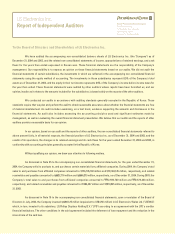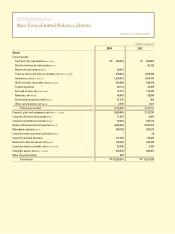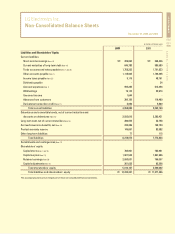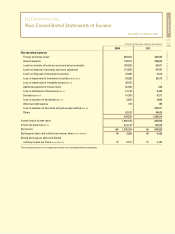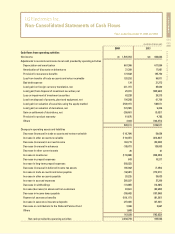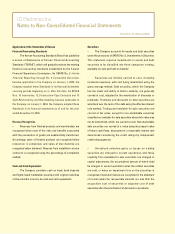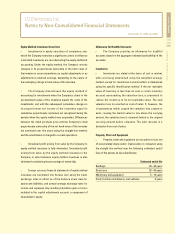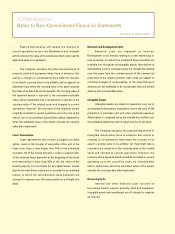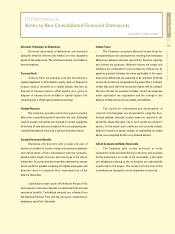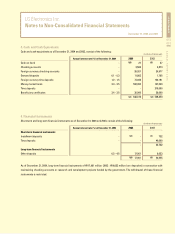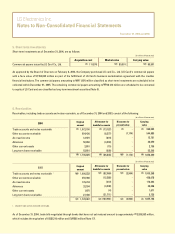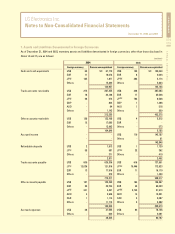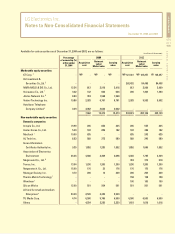LG 2004 Annual Report Download - page 68
Download and view the complete annual report
Please find page 68 of the 2004 LG annual report below. You can navigate through the pages in the report by either clicking on the pages listed below, or by using the keyword search tool below to find specific information within the annual report.
LG Electronics Inc.
Notes to Non-Consolidated Financial Statements
December 31, 2004 and 2003
Application of the Statements of Korean
Financial Accounting Standards
The Korean Accounting Standards Board has published
a series of Statements of Korean Financial Accounting
Standards (“SKFAS”), which will gradually replace the existing
financial accounting standards established by the Korean
Financial Supervisory Commission. As SKFAS No. 2 Interim
Financial Reporting, through No. 9 Convertible Securities,
became applicable to the Company on January 1, 2003, the
Company adopted these Standards in its financial statements
covering periods beginning on or after this date. As SKFAS
Nos. 10 Inventories, 12 Construction-Type Contracts and 13
Debt Restructuring and Rescheduling, became applicable to
the Company on January 1, 2004, the Company adopted these
Standards in its financial statements as of and for the year
ended December 31, 2004.
Revenue Recognition
Revenues from finished products and merchandise are
recognized when most of the risks and benefits associated
with the possession of goods are substantially transferred.
Accordingly, sales of finished products are recognized when
inspection is completed, and sales of merchandise are
recognized when delivered. Revenue from installation service
contracts is recognized using the percentage-of-completion
method.
Cash and Cash Equivalents
The Company considers cash on hand, bank deposits
and highly liquid marketable securities with original maturities
of three months or less to be cash and cash equivalents.
Securities
The Company accounts for equity and debt securities
under the provisions of SKFAS No. 8, Investments in Securities.
This statement requires investments in equity and debt
securities to be classified into three categories: trading,
available-for-sale and held-to-maturity.
Securities are initially carried at cost, including
incidental expenses, with cost being determined using the
gross average method. Debt securities, which the Company
has the intent and ability to hold to maturity, are generally
carried at cost, adjusted for the amortization of discounts or
premiums. Premiums and discounts on debt securities are
amortized over the term of the debt using the effective interest
rate method. Trading and available-for-sale securities are
carried at fair value, except for non-marketable securities
classified as available-for-sale securities whose fair value may
not be determined, which are carried at cost. Non-marketable
debt securities are carried at a value using the present value
of future cash flows, discounted at a reasonable interest rate
determined considering the credit ratings by independent
credit rating agencies.
Unrealized valuation gains or losses on trading
securities are charged to current operations, and those
resulting from available-for-sale securities are charged to
capital adjustments, the accumulated amount of which shall
be charged to current operations when the related securities
are sold, or when an impairment loss on the securities is
recognized. Impairment losses are recognized in the statement
of income when the recoverable amounts are less than the
acquisition cost of securities or adjusted cost of debt
securities after the amortization of discounts or premiums.


